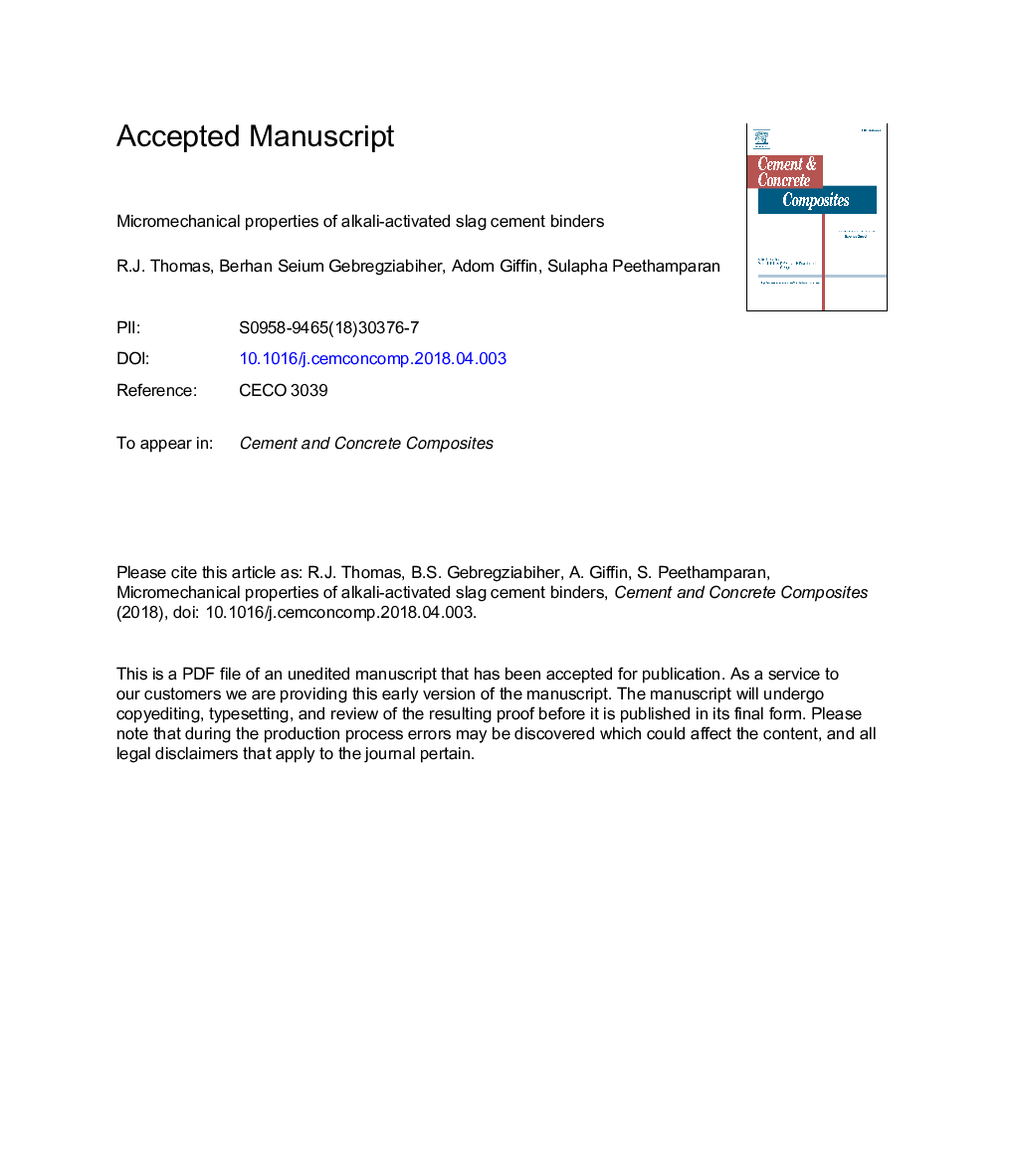| Article ID | Journal | Published Year | Pages | File Type |
|---|---|---|---|---|
| 7883821 | Cement and Concrete Composites | 2018 | 49 Pages |
Abstract
An experimental investigation into the micromechanical properties of alkali-activated slag cement (AASC) binders was carried out using targeted and grid nanoindentation. The results of grid indentation techniques were deconvolved using Gaussian mixture modeling with Bayesian model selection to determine the appropriate number of component phases for the model. The information given by the resulting mixture models and from targeted indentation experiments was disseminated in the context of existing information about the composition and development of the microstructure in AASC binders. The microstructure of sodium silicate-activated slag cement contains only two components (ground mass gel and unreacted slag cement) upon microscopic examination, but indentation data suggest that it is much more complex and varied. The microstructure of sodium hydroxide-activated slag cement contains ground mass gel, unreacted slag cement, and an inner product ring surround the unreacted slag. The inner product is denser, harder, and stiffer than the surrounding product phases. The micromechanical properties in sodium hydroxide-activated slag cement are not affected by activator molarity; the macroscale strength is similarly unaffected. Conversely, the micromechanical properties of sodium silicate-activated slag show a slight improvement with increased silica modulus, while the macroscale strength shows a significant improvement. The macroscale improvement is likely due to the increased size of unreacted slag cement grains, which are shown to be very hard and stiff.
Keywords
Related Topics
Physical Sciences and Engineering
Engineering
Industrial and Manufacturing Engineering
Authors
R.J. Thomas, Berhan Seium Gebregziabiher, Adom Giffin, Sulapha Peethamparan,
